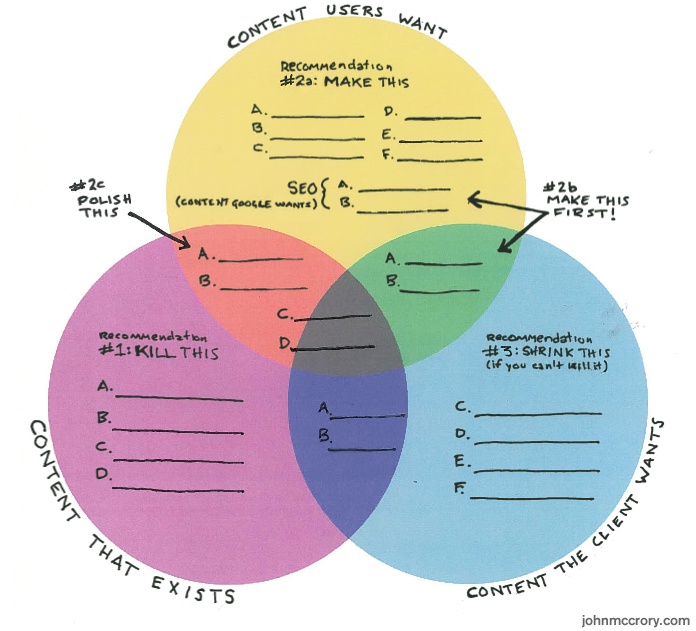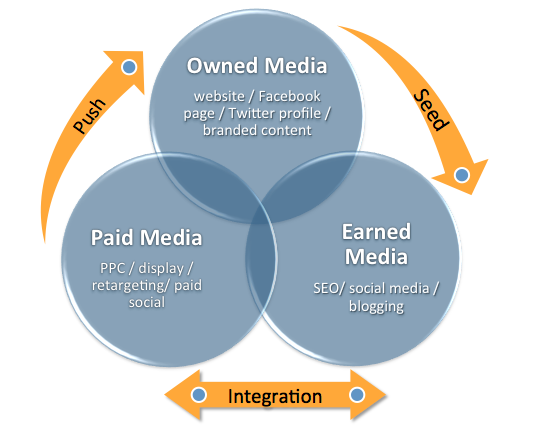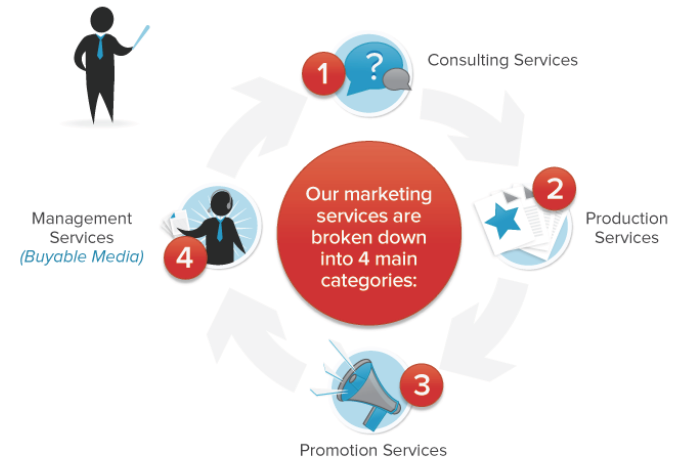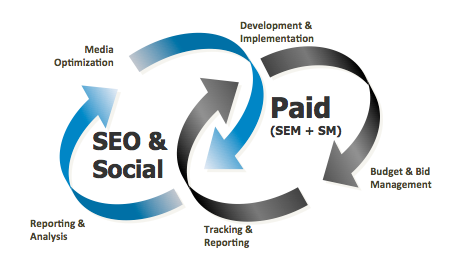Despite content frequently being looked at as the answer, that doesn’t mean that it’s always the first solution for your business.
I’m often asked the question “why great content matters”, and that can be very difficult to answer, mainly because despite running a large number of content campaigns for clients, it’s never a question we would start with first.
Content Strategy
Going back a step, it has to be about strategy. You really need to think about your business goals and marketing objectives.
This could be anything from:
- Raising brand awareness
- Improving your SEO and online authority
- Building your social audience
- Increasing direct sales or leads
- etc…
Ideally, it will be a combination of all of the above and more. That way you can have a fully integrated strategy, where everyone is involved towards having success across all of your owned, earned and paid media channels.
Once you have defined this, then and only then, can you start to think about if the content is the right way to execute your strategy and achieve the goals you are looking for.
If you’ve decided it is the way to go, great! But in order to visualise what great content looks like, you need to know the goals you’re looking to achieve first – otherwise, you’ll never know what success looks like! In some cases you might create something that you consider great, for example, you generate lots of online attention, links and social engagement – but if it’s not valued by your business/client and/or their customers, it’s likely to be wasted or undervalued.
Great content isn’t produced in a silo
When thinking about how to create great content, it’s rarely (if ever) done in a vacuum, this is because there are so many elements that need to fall into place.
For example, just at Re:signal we have a team consisting of:
- Digital strategists
- Content production specialists
- Outreach & promotion specialists
- Biddable media specialists
Each content project is likely to involve someone from each of these teams because great content alone isn’t enough. You need an audience to tell your story to.
As mentioned above, it’s important to think about strategy and goals at an early stage. But it’s also important to start the outreach and social/paid promotion process early too – otherwise, the content you’ve spent so much time producing may fail to deliver when it comes to getting the attention of high-quality publishers or social influencers.
However, If you can get their input and involvement early, you’ll find that they can help you to mould your content into something that’s far more likely to be a success because that way you’re all working together as part of the same team.
Measurement
Often the biggest mistake I still see in content is that the metrics of measurement are often very fluffy and beyond loose KPIs, such as links, search rankings or social metrics there’s very little to be able to demonstrate ROI with.
If a video, for example, generates 1 million views, but that doesn’t have any uplift in customer engagement/sales/word of mouth referrals/organic visibility etc (at any point in the customer lifecycle, not just directly) that isn’t really the great success it might be considered. Whereas a video that has 100 views and resonates with your top customers, in order to help retain them as loyal customers into the future, is far more powerful. But it’s all about measuring and proving it!
We would very often use software to measure and report on the uplift in organic market share uplift. Closely tracking how the content we have created has contributed towards an increase in online market share, organic leads delivered or directly referred sales. Ultimately proving return on investment, so that it’s much easier to say “the value of that content campaign = x, so let’s do more of it!” – because you’re tying it back to real-world business metrics that matter.
What does great content look like?
When I start to think of great content, I’d think of the following traits, it:
- Tells your brands’ story to a targeted audience
- Resonates with current & potential customers
- Engages with a social audience, journalists, and bloggers
- Influence sales at consideration buying phase
- Builds your brand reputation and online authority
- Grows your audience
- Useful, insightful, creative, funny, topical
- Is as concise or as detailed as it needs to be
These can quite clearly tie in with your business goals, it still allows you to be as creative as you need to be with your content, but you’re linking it back to the success metrics that really matter.
There’s a key difference here between your goals and what good content looks like, too. SEO isn’t what good content looks like, links should be a by-product of great content and increasing organic visibility is a knock-on effect of publishing content that resonates with your target audience, which is aligned with your SEO strategy.
The goal should be to create the best piece of content on a given subject and to promote it to a targeted and relevant audience. The SEO strategy should be to honestly believe that you’ve created the best piece of content available on the web, and have faith that if promoted well enough the search engines will reward this – because it provides the best results to searchers.
Quality vs Quantity?
There’s certainly a high emphasis on quality over quantity, with bigger campaigns and more focus on fewer projects. This has involved a large re-education in many ways, where it’s no longer about the number of links you generate, for example, it’s about the quality and the impact that this has from passing authority and link equity.
That said, there’s still an argument for more agile marketing campaigns too.
A huge amount of content that is shared online today is topical, so there’s a big opportunity in being quick onto the latest news story or trending topic.
This often can’t afford the luxury of high quality – as it’s all about being first. So this is where you need to have a team who can think on their feet, and be available to take advantage of any opportunities which may come up within your industry. Then you can add to it and build it up afterwards.
Target audience
It’s always very useful to carefully consider your target audience when creating any content. Quite often the first thought when publishing content is to think of attracting the attention of bloggers and journalists.

This means from a branding perspective, it’s vital to consider the impact towards current and potential customers so that your content can add value and give content that the client/customer wants as well as the user/reader.
If you are a big brand with thousands of customers and subscribers/social followers, wouldn’t it be great to be able to create content which they can engage with and share?
That way, they can become your influencers, and they can help you share your brand story in order to leverage the influence of your content, in addition to the outreach and PR you have lined up.
Summary
Define your goals early and integrate content into your overall marketing strategy to get your whole team involved and behind you.
To answer the question “why great content matters”, your marketing strategy should be driven by the key business goals you want to achieve. Content in itself shouldn’t operate in a silo, it should play a key role within a multichannel strategy which supports you to hit your overall marketing goals and business objectives.






